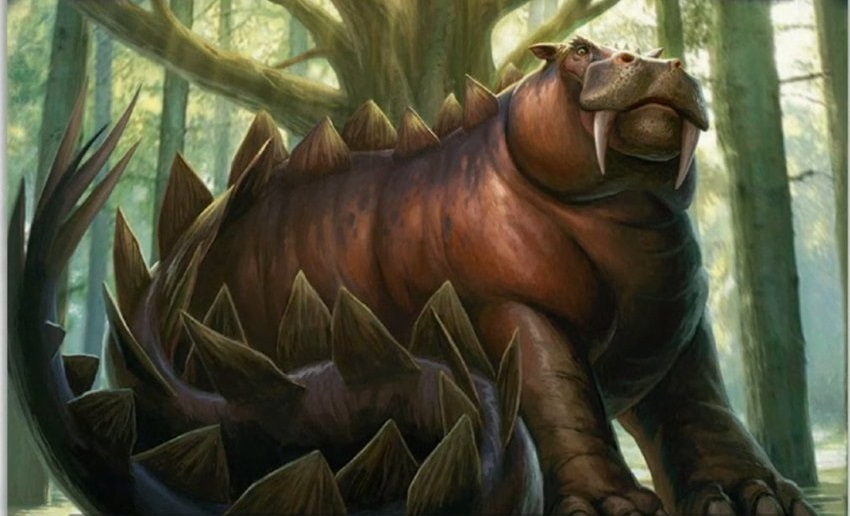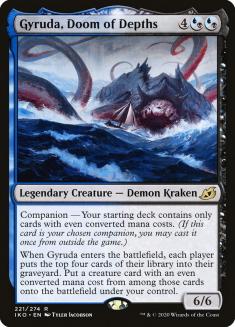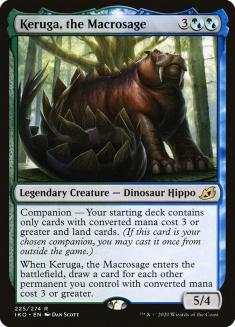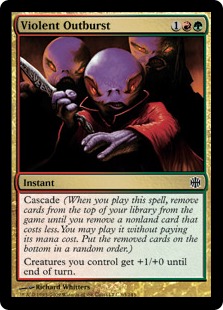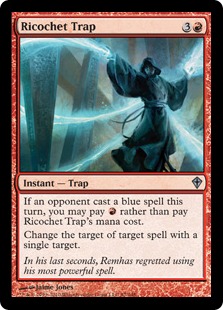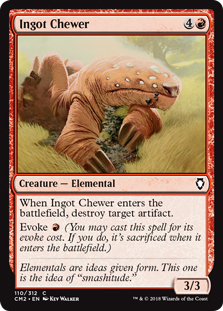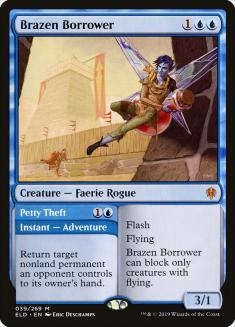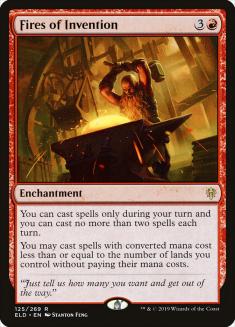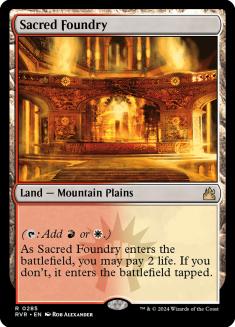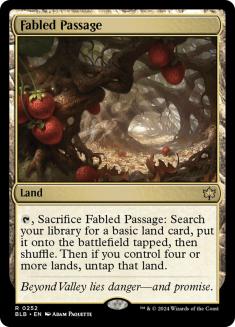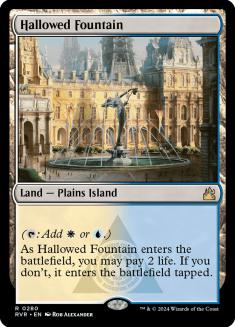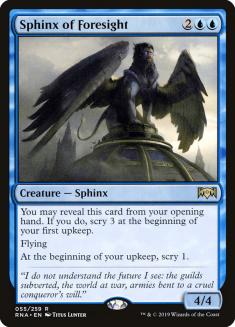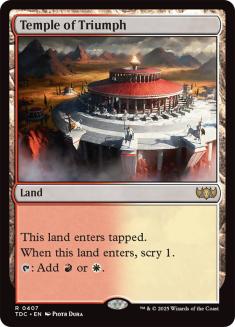Ikoria: Lair of Behemoth has several new abilities that are different from anything we’ve ever seen. Perhaps the most surprising of them is companion. Here’s how companion works:
- There are ten cards with companion – one for each hybrid color pair.
- All the cards with companion have a deckbuilding restriction to allow their companion ability, such as “you can only have cards with even converted mana costs” or “you can only have one copy of each nonland card in your deck.”
- A companion takes up a slot in your sideboard.
- At the start of the match, you reveal your companion to your opponent.
- You can cast your companion from your sideboard once. After that, it behaves like a normal card.
- You can play your companion cards normally in your deck and if you do that you can ignore the companion restriction.
Fulfilling your companion’s conditions has basically two advantages. The first one is that you ensure you will always have access to your card whenever you can cast it – if your companion happens to be a build-around, you can build your entire deck knowing that you will be able to find it no matter what happens. You could even play some copies of it in your maindeck and an extra one in your sideboard, if you wanted.
The second advantage is that companions effectively draw you a card when cast. They don’t literally do that, of course, but they don’t use up any of the cards you had (since you cast them from your sideboard), so they’re essentially free and you will be up a card whenever you cast a companion.
All in all, I would say that, for this to be worth it, either the restriction has to be very small, or the card has to be very strong in the particular strategy you are playing. For example, let’s take another of the previewed companions – Gyruda, Doom of Depths.
You could reasonably slot Gyruda, Doom of Depths into a Temur Reclamation deck if you cut Opts and Uro, Titan of Nature’s Wrath. Opt we can do without (especially since now you can actually play Boon of the Wish Giver), but Uro is an extremely strong card, so we need to make sure we’re getting our money’s worth from Gyruda if we’re not playing Uro.
Is Gyruda very good in Temur Reclamation? It doesn’t seem to be, at least not to justify playing it instead of Uro, even if it “draws a card” in the process. To me, a card like Gyruda is hardly just going to be slotted into an existing deck – it’s going to spawn entirely new archetypes that try to abuse it, since then you can be sure that the cost is worth it (such as the ones you can find in Autumn Burchett‘s article last week).
I know that I myself will spend a lot of time trying to brew new decks with all of the companion creatures – it’s a powerful and unique effect and there’s no real way we’re going to know if they’re worth it without trying them out. However, regardless of whether new decks based on these cards can emerge or not, there’s one of the companion creatures previewed so far that I believe will almost certainly be played into an existing Tier 1 deck, and it will make that deck significantly better. In fact, I’d be shocked if this card didn’t see immediate Standard play based on how strong I believe it is in that archetype.
That card is Keruga, the Macrosage.
Unlike some of the other companions, Keruga has a limitation that we’ve seen in Magic before – decks like Living End, for example, relied on having no one- or two-mana cards so that they could always cascade into Living End with Violent Outburst or Demonic Dread. From there, we know that a restriction of “cards with converted mana cost three or more” does not necessarily mean you cannot cast spells earlier on. There are several kinds of cards that bypass this restriction, for example Ricochet Trap or Ingot Chewer in the aforementioned Living End deck.
In Standard, we have Adventures. Bonecrusher Giant and Brazen Borrower are both spells you can cast on Turn 2, yet have a converted mana cost of three, and therefore conform to Keruga, the Macrosage’s restriction. Even Mystical Dispute, which sees maindeck play, can be cast on Turn 1 or 2 while dodging the Keruga restriction.
So, what is a Tier 1 deck in Standard that currently runs only cards that cost three or more and that would be interested in this five-drop? I’m glad you asked!
Creatures (17)
- 4 Sphinx of Foresight
- 4 Cavalier of Flame
- 3 Kenrith, the Returned King
- 4 Bonecrusher Giant
- 2 Haktos the Unscarred
Planeswalkers (4)
Lands (27)
Spells (12)

This is Marcio Carvalho’s deck from the first MagicFest Online. If we look at the decklist, there are only two cards that don’t respect Keruga, the Macrosage’s restriction – two copies of Aether Gust. That’s it! While Aether Gust is certainly a strong card, especially so in this deck with a lot of looting, you can easily replace them with something else if you need to and I strongly believe that Keruga, the Macrosage is worth it.
Jeskai Fires is a deck with one plan. It wants to cast Fires of Invention and then it wants to cast five-drops. When you have access to Keruga, the Macrosage, you only need the Fires of Invention because it automatically gives you a five-mana creature to cast! The effect on Keruga is also quite relevant, as it counts any three-casting-cost permanent – which, conveniently, includes every single card in your deck other than Deafening Clarion (since even your spells can become creatures later on).
This means that, if you cast Fires of Invention and Sphinx of Foresight, you can then cast a Keruga that will draw two extra cards. If you add up the copies of Teferi, Time Raveler; Bonecrusher Giant; Brazen Borrower; or redundant Fires of Invention that could already be on the battlefield, we’re looking at a potential four cards on Turn 5, which is a very strong effect attached to a free 5/4 (which, also conveniently, is just the right size to survive Deafening Clarion).
Imagine, for example, this opening hand:
This is a mediocre opening hand – it has Fires of Invention and nothing else. You could cast Fires of Invention and then follow it up with nothing or with only one creature, which could not be enough to win the game.
Now imagine you have access to Keruga, the Macrosage in your sideboard – all of a sudden, the worst-case scenario is that you cast double Fires of Invention Turn 4 and then on Turn 5 you cast Keruga, drawing two extra cards.
Now imagine that you drew, say, a Kenrith, the Returned King. The original deck would cast Fires of Invention on Turn 4 and then cast Kenrith, the Returned King on Turn 5. It would use the ability to draw an extra card and, barring a topdeck, would attack for five damage.
Now imagine the new version of the deck with Keruga. You’d cast double Fires of Invention on Turn 4, and then on Turn 5 you’d cast Kenrith and Keruga, drawing three cards. You can then draw another card or gain five life, and you get to attack for ten immediately. In this scenario, you very likely win the game on Turn 6, and this is about as weak of a viable hand as we can get for the Fires of Invention deck.
Even in games in which you don’t have Fires of Invention, this deck can use Keruga to good effect. Imagine, for example, a six-card hand of:
You mulliganed and you have Sphinx of Foresight and a Temple, so it seems like a reasonable keep, but all your scrys just turn up land. In the normal deck, you’d cast Turn 2 Stomp, Turn 3 Bonecrusher Giant, Turn 4 Sphinx of Foresight, and you might not have a play the turn after, which probably means the game is over – even if you do draw Fires of Invention, you have no follow-up. In the updated version of the deck, you can simply hardcast a Turn 5 Keruga and draw two cards! This is an enormous difference in game state and absolutely justifies giving up maindeck Aether Gust.
So, what would a list like this look like? Ironically enough, Marcio’s list seems to already be set up for the addition, since it has extra four-drops. Now that you have a guaranteed five-drop to cast, there’s less burden to fill your deck with expensive creatures to make sure you find one, so we should focus on cards that can be cast in the earlier turns (especially since each card you cast early on means your Keruga is stronger). I’ve played upwards of ten five-drops in the deck before, but right now I think you could actually get away with seven or eight.
The biggest hurdle is that, since we’re not playing Aether Gust, we probably want to play Brazen Borrower, which works in two different ways with Keruga – you can play it even though Petty Theft costs two, and it’ll draw an extra card if it’s on the battlefield. Since we’re playing Brazen Borrower, we want a more blue-based manabase – after all, we want to be able to cast it on Turn 3. This means it’s not as easy to play Haktos the Unscarred. It’s still a 27-land deck with a lot of multicolored lands, scrying, and four copies of Fires of Invention, however, so it’s possible you can get away with basically anything, but I lean towards cutting one Haktos and making the mana easier on Brazen Borrower.
Here’s the list I would test first:
Creatures (20)
- 4 Sphinx of Foresight
- 4 Cavalier of Flame
- 3 Kenrith, the Returned King
- 4 Bonecrusher Giant
- 4 Brazen Borrower
- 1 Haktos the Unscarred
Planeswalkers (4)
Lands (27)
Spells (9)

When all is said and done, the companions will make us challenge all our preconceived notions about deckbuilding. Are they worth conforming to this set of restrictions that we’ve never had before? I don’t know, but I am eager to find out.

